If you’re looking to build a successful business, you’re going to need negotiation skills.
Chances are good that you’ll eventually be negotiating with a new client or customer.
To do this correctly, you’re going to need a solid set of negotiating skills.
But the simple fact is that most of us don’t possess these skills naturally. An infographic from Success explains why negotiating is so difficult.
About 57 percent of us fail to accurately estimate how assertive we’ve been, and most of us only remember 50 percent of what the other party said.
Those statistics are staggering.
But don’t fear. In my years in business, I’ve learned how to become a powerful negotiator overnight.
These are the strategies that will make a massive improvement for your negotiating skills and turn you into an effective communicator and listener.
By using the best strategies, you can make effective negotiations and get the prices and projects you deserve.
Here are the business negotiation skills you need to close new clients.
Understand the client’s needs
The first step in making an effective agreement with someone else is understanding their needs.
While most people discover this during the negotiation process, you’ll be more powerful if you can plan this in advance.
The more prepared you are before you walk into the negotiation, the better you’ll be able to make your decisions.
Doing your homework will give you ideas on exactly what your counterpart wants and needs.
The good news is if you’re at this point, you already know something about the type of client who would want to work with you.
You’ve convinced him or her to do business with you, which can be a very difficult process in itself.
But the challenge is now intensified. Instead of communicating online or in your copy or website, you’re going to start talking in person.
This can be difficult, but the more prepared you are, the better.
Here’s how to effectively research your client and understand his or her needs.
Make sure you negotiate with the decision maker
The first thing you want to do is to make sure you’ve been scheduled to meet with the right person.
While this may seem obvious, it’s a tactic used by some negotiators to wear you down. Their strategy is simple. They have you come to an agreement with a lower-level negotiator.
Once you’ve come to that agreement, however, the negotiator reveals that he or she is not the final decision maker.
This mean you’ll need to enter into another round of negotiations with someone that has more authority. This wears you down, and it usually results in you accepting a lower offer.
Instead, do your research ahead of time.
According to information published by Web Design Software and eBooks, you need to make sure you’re only dealing with the party who is empowered to make this agreement.
I’d recommend doing a check for his or her job title on LinkedIn. Look for someone with the ability to make the final call on the deal you’re negotiating.
The exact title he or she holds isn’t as important as the relative position of the client in the company as a whole.
Understand the other options he or she has
When you walk into a negotiation, your client may try to change your original offer with a threat to use a competitor.
According to research published by Rain Sales Training, this is a strategy that puts you in a position to compete against an unknown opponent’s time pressure.
While this may be a real threat, it’s oftentimes merely a bluff to scare you into lowering your price.
Instead of letting this happen, you need to deeply understand what other offers your client might have on the table before meeting with you.
Do research on the offers he or she might have received from others in your same industry.
This information may not be available to the general public online, but some are. You can look at various contract requests on sites like Upwork.
It also helps to have a clear idea of the normal pricing of the services you offer.
If your prices are higher than most bids, you need to have a reason behind this before the negotiating starts.
Plan what you’re willing to agree on
If you have to make a decision on the spot in your negotiation, you’re going to struggle to make the right choices each time.
Instead, decide ahead of time exactly where you’re willing to compromise, and where you’re firm.
The most important thing to do here is to come to your lowest acceptable offer. This is the point where you would walk away from the negotiation, no questions asked.
Once you know where you stand with this, you have extreme power in the negotiation room.
You know exactly where you’re willing to adjust and refine, and what your limit is for concessions.
Find your best alternative to a negotiated agreement
A critical step to understanding your side of the negotiation is researching your best alternative to a negotiated agreement, or BATNA.
Once you understand this alternative, you’ll be able to make a fair decision that works in your favor.
This other alternative might not be another client, but other work projects that you’ve put on hold.
Remember that every client comes with a cost. If they aren’t willing to pay your fees, it can dilute your value and cause a downward trend in your pricing.
Having a BATNA in mind will help give you the power to walk away from the agreement.
But in your planning, you also want to consider ways you can easily negotiate while working towards a solution that works for you and your client.
Having a BATNA is important, but you also want to have a plan for negotiating in a way to attract the client. Here’s how to plan for this.
Remember that price isn’t the only factor
It’s easy to get caught up in the idea of negotiations that revolve exclusively around price.
But there are a number of other factors that may change depending on your goals and the pricing you and the client have in mind.
Consider trading specific elements for price, like a more relaxed schedule at a lower price. This is time for you to be creative and to think of other things you’re willing to sacrifice.
You should look to understand what else is important to the other party. Is the timeline critical, or would they be willing to pay less if you had longer to fit it in?
Also, look for creative ways to provide value without compromising price. If you kept the price, but included extended support or early access to features, would it tip the scales?
During this planning stage, you want to create as many options as possible so you’re prepared when you need to negotiate in the moment with the client.
Establish your priorities
Before you start negotiations, you need to have a clear idea of what your priorities are.
There are lot of ways to organize them, but the easiest way is to rank what you want from highest to lowest priority.
This helps you stay clear on exactly what’s most important for your specific needs.
It’s easy to enter a negotiation thinking one thing, only to agree to something far less than you had hoped.
By writing down a list of your priorities in order, you can be sure the items at the top of the list stay in place, and you only compromise on the lower items.
Once you have a solid understanding of your priorities and those of your client, you need to create the offer.
Prepare your proposal
When you start negotiating, you need a place to begin.
While your client may start with a prepared proposal, it’s unlikely. Instead, you should create a detailed outline of the work that needs to be completed.
I won’t cover the specifics of the proposal here. Just know that you need to include what the work entails, a statement of deadlines and milestones, and a specific price.
Once you have that in place, you need to include a few negotiation tactics. That’s what I’ll explain next.
These are the strategies you need to include early on in your proposal to give you maximum benefit when it’s time to start negotiating.
Include extra pieces you’re prepared to give away
When you create a list of items you’ll work on for the client, you should add a few extras that are nice to have, but not necessities.
These should be extra that are low cost or no cost for you and don’t require much extra time.
These “nice-to-have” items are specifically designed to give away without hurting your position.
When the client starts arguing for different terms, have these on hand to offer instead of lowering the price.
A great example might be a client who wants a lower price but is willing to pay the asking price if you include extra support.
While this isn’t a huge time expense for you, it can change the perception in the mind of the client from a product to a service, and make it worth the final asking price.
Plan what concessions you’re willing to make
When you design your final bid, it’s a good idea to include a few things you’re willing to make concessions on.
An example of a concession you might want to make regarding price is charging a slightly higher fee for an item that isn’t as important to the potential client.
When he or she wants to reduce the price, show that you can cut out that item from the proposal. Since it isn’t a priority to him or her, the potential client will likely agree to this.
But since you charged extra for this piece, it will make the final price go down significantly without changing the base price of the more important work.
Having concessions like these planned in advance will make you much more effective and give you more leverage at the negotiation table.
Establish a presence
As much as we’d like to ignore it, the truth is that negotiation depends a lot on your physical presence.
In order to succeed with the negotiation you’re planning, you need to develop some skills ahead of time so you can present a demeanor that helps you achieve your goals.
HubSpot recommends building rapport at the beginning of the negotiation, so your first impression is a positive one.
In those first few minutes, here are other techniques you will want to consider to make the process easier while giving yourself more leeway in the terms you’ll discuss.
Create procedures to make the negotiation run smoothly
If you start off the negotiation without any procedures or terms, it can quickly become muddled and difficult to understand exactly what the other party is saying.
To change this, you should follow the research published by Impact Hub Boston. They recommend creating a structure and a model for the conversation.
This doesn’t need to be intimidating or overwhelming. Just explain that you’ll show the proposal, you’ll discuss the terms, and then you’ll come to a final agreement.
If you have a timeframe or expect other situations to arise, it’s best to clear this up ahead of time instead of leaving surprises to interrupt the negotiation process.
It may also be helpful to implement a number scale to help you and the client indicate which items are the most important to each of you.
By creating these processes before you begin, you can reduce the stress of the negotiation and make faster progress.
Establish your authority early on
Establishing authority is a tactic proven by neuroscience to improve sales, and it’s something you should use in the negotiation as well.
Being confident and showing your expertise will present you as someone who is knowledgeable about the topic, and it will likely give you an upper hand in the deal.
If you can, be confident and present the first offer. This will help set the tone of the negotiation for the rest of the session.
Even if you can’t (or don’t want to) present the first offer, you can still show your authority by speaking in an authoritative way about the topic.
While you don’t want to sound arrogant or confuse your prospect, you should use technical language that explains the details behind the work you’ll be doing.
Maintain emotional control
Oftentimes, negotiations become heated. While there are ways to de-escalate them, it’s much easier to keep a steady composure no matter what happens.
To do this best, make sure you’re addressing the three components of people’s problems: perception, emotion, and misunderstanding.
Stay steady throughout the negotiation and look to perceive exactly what your prospect is communicating.
Look to keep both positive and negative emotions in check to keep yourself in a position of authority.
And finally, clarify any communication you don’t understand immediately. (I’ll cover how to do this in a minute.)
If you’re unsure of how to stay calm with your emotions, research has suggested that the more caffeine you consume, the less likely you’ll budge on an argument.
Consider having a cup of coffee before negotiating if you want to stay calm and persistent with your demands.
Be likeable and friendly
While you should be firm on what’s important to you, it’s also a good idea to develop a certain rapport with your counterpart and be approachable.
According to research published by Business Insider, the first five minutes is a great time to prove that you’re likeable. This will help in negotiations later.
To do this, be considerate and friendly. Don’t come across as too stern early on in the discussion, as this will only hurt your cause later.
Build trust with the potential client
One of the cornerstones of the negotiation process is getting your client to trust you. Ideally, there will be trust on both sides.
This tends to reduce the number of bluffs or moments of deception that lead to a confusing and antagonistic negotiation.
A great way to build this kind of trust is to share some information with your counterpart. Be honest with what’s important to you as you work on the negotiation.
This honesty will build mutual understanding and can even encourage your counterpart to be honest with you as well.
Overall, it makes for a more effective negotiation.
You should also consider mirroring. This is making subtle actions that resemble those made by the potential client.
It’s perceived as a sign that you’re engaged with his or her words and is usually seen as a gesture of trustworthiness.
By working to build trust, you can make yourself appear more authoritative and get to your goals in a way that helps both you and your potential client.
Bargain effectively
Once you’ve presented your proposal and established the presence you’re going to carry throughout the negotiation, it’s time to start bargaining.
There are a variety of techniques you can use to increase what you get out of the discussion.
Your goal is to not offend your prospects or make them feel like you’re taking advantage of them.
Depending on the type of negotiation, you might spend most of your time bargaining about small items, or even the entire package.
Having a good understanding of the techniques you can use (and will need to defend against) during this process will help you finish the negotiations well.
Remember, the bargaining process isn’t an all-or-nothing venture. Your goal is to keep your highest priority items while compromising on those that aren’t as important to you.
Resist the anchoring bias
I mentioned before that it’s a good idea to present your offer first because this will set the tone for the rest of the discussion.
While this is true, it works the other way, too. If you don’t have the ability to present the first offer, remember that the whole negotiation will be framed by that first offer.
This is known as the anchoring bias, and it can allow a ridiculously high price to lead the negotiation and frame everything else.
In the middle of the negotiation, you should seek to use this yourself. But if you can’t, you need to understand your counterparts might be using the technique against you.
Look to see if the original number they’ve given you is too high. If it is, feel free to counter with a much lower offer to set the stakes along more reasonable lines.
Present multiple offers at once
Research published by Notre Dame has shown that presenting multiple options at once can be a great way to improve the results of your negotiations.
If there are a few different ways you can do the work and acquire the client, consider presenting each of these in succession.
By doing this, you allow the potential client to choose the option he or she is most comfortable with and start negotiations from there.
This means you can get a feel for his or her preferences from the beginning, instead of constantly guessing throughout the bargaining process.
Listen carefully for flexibility
Being a good communicator is largely due to your listening skills. To make sure you’re making the most of the negotiation, listen carefully to what your counterpart has to say.
Spend a lot of time listening, and don’t talk during the whole process. The potential client might see you as monopolizing the conversation and they won’t respect you.
Instead, you should listen carefully. This has a second advantage as well: you might discover a special area of flexibility you didn’t expect before.
By understanding what’s important to your prospect (and what isn’t), you’ll get a better feel for what you can offer during the negotiation.
For example, if he or she mentions in passing that a particular feature isn’t that important, make a note.
You may be able to remove this from your proposal later to come to an agreement with the prospect.
Ask questions to fully understand their side
To be successful in the negotiation process, you need to understand the inner thoughts and motivations of your prospect.
While reading body language and listening carefully will help with this, the easiest thing to do is just ask.
Expert negotiators ask one question for every four statements, so don’t be afraid to have a number of questions about what your prospect mentions.
Look to get a better feel for what they actually want.
You’ll also be able to understand the exact steps he or she expects you to take, which can help to reduce headaches and problems later on as you get started with the actual work.
The earlier you can clarify everything you’re discussing, the more effective the final agreement will be when it’s time to wrap things up.
Close the deal
Once you’ve finished the negotiation process, it’s time to close the deal.
This is the final step, and you need to make sure you do this right. WIthout some specific skills to make your discussions final, the work you’ve done will languish.
You need to understand the other party’s moves down the line, and be prepared to formalize the final decisions.
The bargaining process is important, but you need to close more deals to keep your startup from failing.
Here’s how to make sure you close the deal correctly.
Use urgency to finish the agreement faster
It’s no secret that urgency can help you sell more, and the same concept applies to the negotiations you make as well.
To make the best use of this, you’ll need to show that you have a limited amount of time to agree to the final proposal.
There are a few ways to do this.
First, you can use a smaller deadline, like an upcoming meeting, to move the negotiation process along more quickly.
If the client knows that you must leave the negotiation at noon, there’s increased pressure to come to an arrangement beforehand.
The other technique is more effective, but it requires more intricate and long-term planning. You’ll need to have a reason why the contract must be agreed upon soon.
For example, if you have a large project coming up in a month and you won’t have the resources to finish the client’s job, this provides an incentive to finish things sooner.
Find a reason for urgency in the agreement, and you’ll have more leverage.
Put everything in writing
Negotiations can be difficult to manage properly, and they’re often fraught with miscommunication.
To make sure everyone understands exactly what is agreed to, put the final version of the negotiation in writing as soon as possible.
If this is a formal agreement, move towards having an attorney draft a contract soon after the process is completed.
If the agreement is less formal or smaller in scale, you may just need to create a statement of work and have both parties sign it.
The important thing is to get this cleared up as quickly as possible to prevent misunderstanding and ensure the negotiation process doesn’t have to be repeated again.
Don’t burn your bridges
No matter what you do during the negotiation, make sure to keep in mind the importance of the relationship you have with your prospect.
While it may make sense to be firm in the midst of the negotiation, always have a limit on how tense the negotiation is.
If your relationship stays positive, you may be doing work with the client again, or he or she may even recommend someone else to work with you.
If you’re too stubborn and refuse to work well with him or her, your relationship will be strained.
This makes it difficult to work on the project and virtually guarantees you won’t be getting any repeat business or referrals.
Use the best negotiation techniques you can, but stay collected and preserve the relationship as much as possible.
Conclusion
When it comes to negotiation, most of us are pretty bad at estimating our innate abilities. We usually think we’re better than we are, and we end up settling in the negotiation process.
But that doesn’t need to be true for you.
If you’re an effective negotiator, you can increase your business dealings and give yourself a set of clients that pay well and don’t make unreasonable demands.
First, you need to understand what you and your client need.
Plan ahead of time and understand what options he or she has, and what you’re willing to sacrifice to make the deal work.
Before you enter the negotiation, carefully plan out your bid and include all the details you want to have in advance before you start making deals.
Include a few extra pieces that will be easy to eliminate or reduce as the bargaining begins.
You’ll also want to make sure you establish a presence of confidence and authority early on in the negotiations so you can reach out to the client and earn his or her trust.
Once the bargaining begins, you want to use proven psychological strategies to keep your demands at the forefront. Use flexibility and listening skills to your advantage.
Finally, close the deal firmly and effectively. Use urgency if you need to, and make sure everything is in writing.
Keep the relationship intact, and you’ll be set to make effective negotiations for years to come.
What business negotiation skills will you use to close new clients?

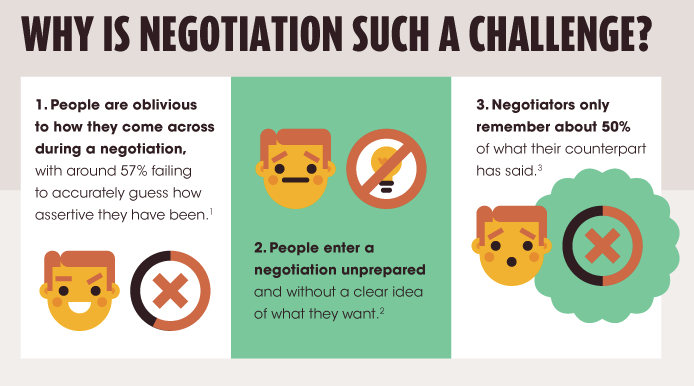
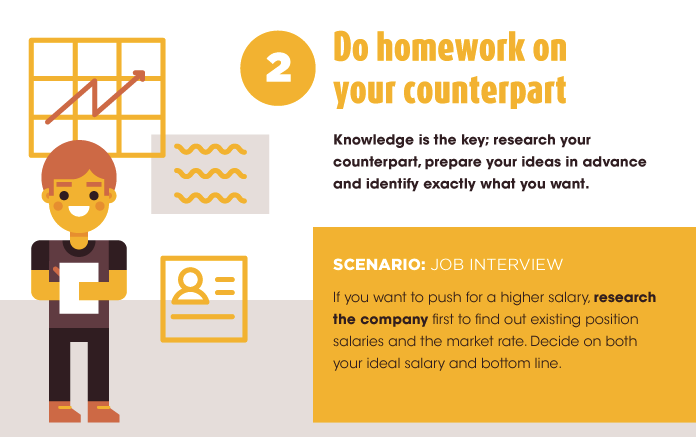
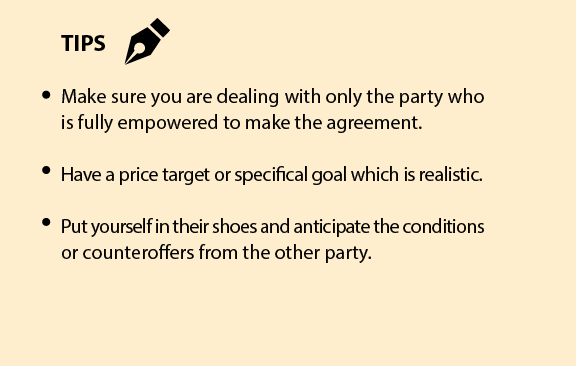

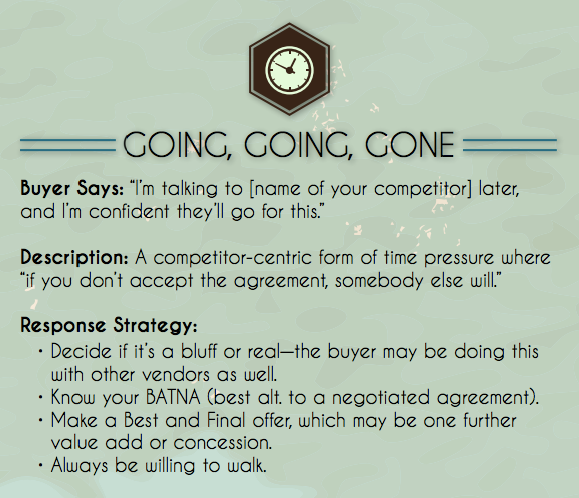
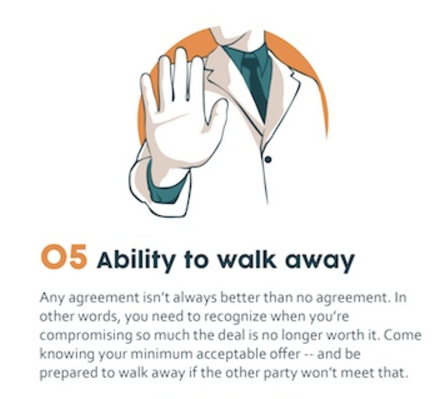
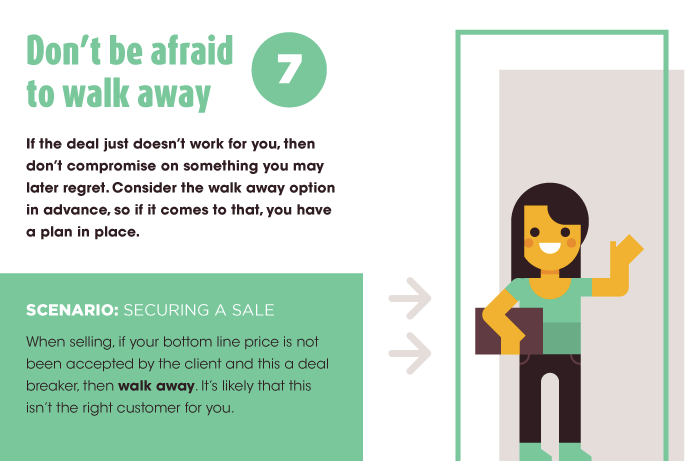
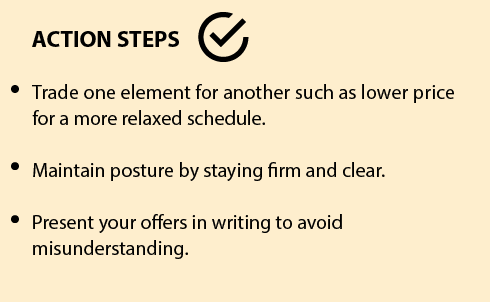

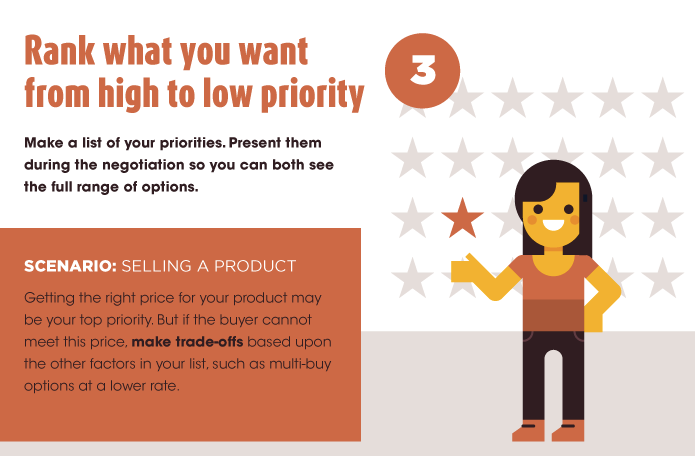
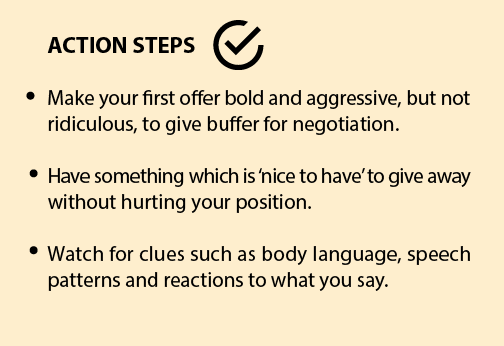
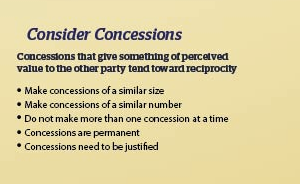
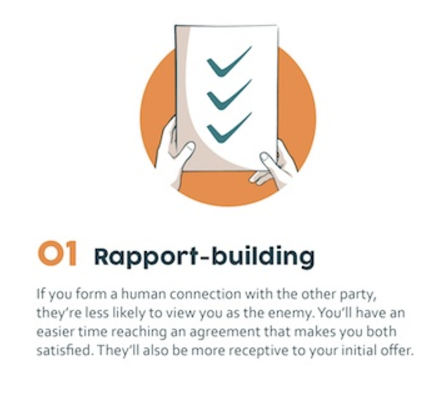
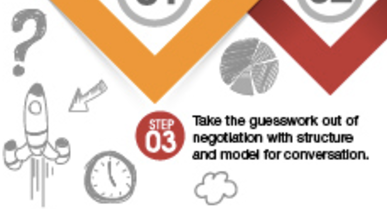
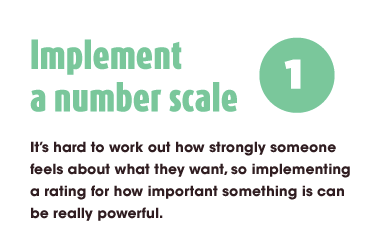




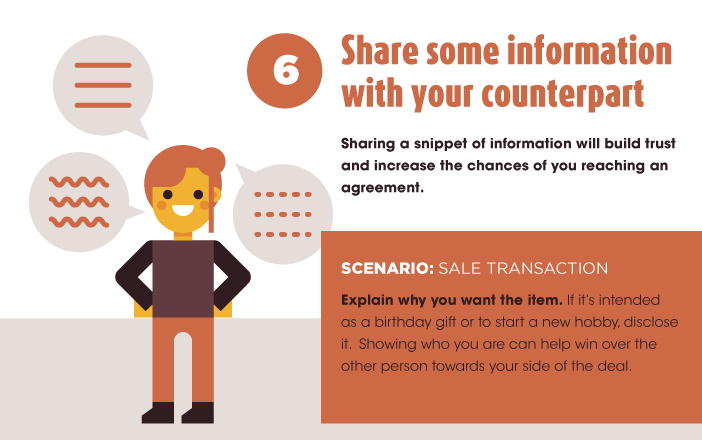
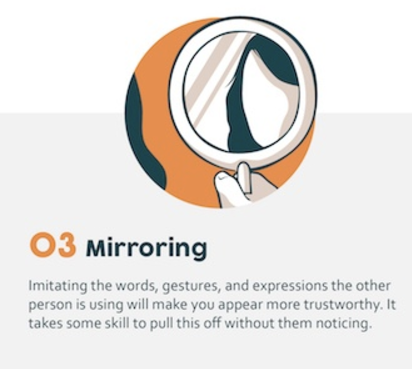

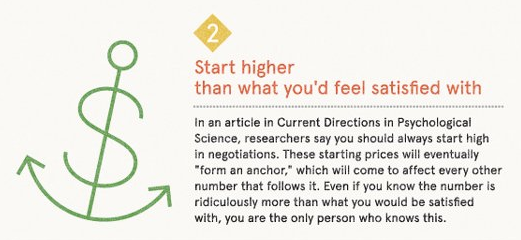

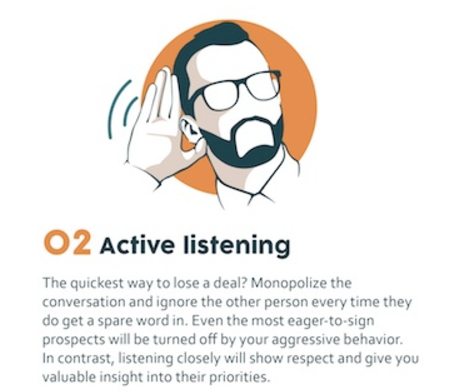
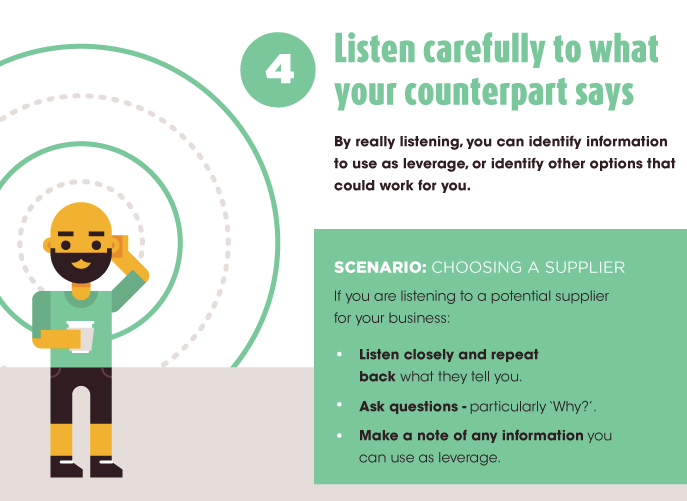



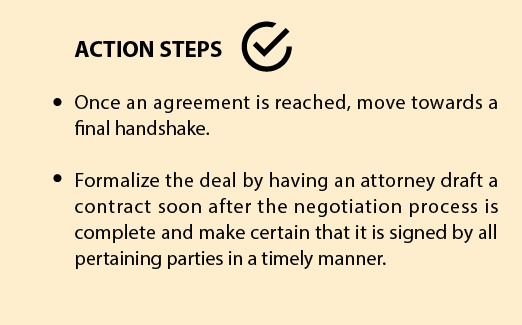
Comments (2)